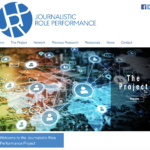Why we need to look more critically at Canadian coverage of international news
International Reporting Bureau Editor Carey French outlines the challenges facing Canadian media outlets as they struggle to cover international news against a backdrop of dwindling resources. –
By Carey French, International Reporting Bureau Editor
Whenever you find thousands of sane people scrambling to get out of a place and a bunch of lunatics struggling to get in, you pretty much know you’re dealing with newsfolk.
Citing this pithy (and cleaned-up here) observation by iconic Hearst correspondent H.R. Knickerbocker in the 1930s, veteran Associated Press foreign correspondent Mort Rosenblum noted in his 2010 book Little Bunch of Madmen that apart from the swelling of the ranks by “madwomen,” a reshaping of the news landscape and whole new toolbox, “nothing essential has changed” in the gathering of international “ground truth.”
It is one of the ironies of our craft that while the need to understand the nuances of international news has never been greater, the resources available to tell these exquisitely complex stories have rarely been stretched thinner. In a decade of a famine of revenue and a feast of great international stories, the results have been blown-out foreign budgets, an increased reliance on reporters “parachuted” in from Canada or from downsized but up-labelled regional “super bureaus,” and the elevation of the fixed bureau to the head of the endangered species list. The number of these foreign bureaus has shrunk by half from the 39 recorded by a federal parliamentary committee in 2005.
Set against that decline has been a growing cadre of young, technologically savvy, but chronically uninsured freelancers, who continue to deliver Rosenblum’s “ground truth” on a piecework basis. The “packhorse” agencies, such as Reuters and The Associated Press, still deliver the big picture, while a handful of Canadian newspapers and networks remaining in the bureau game hunt for more creative ways of delivering the illusion, if not always the fact, that covering the world from a Canadian perspective is business as usual.
It isn’t. And nor should it be.
For starters, there’s that “F” word. It prompts winces of discomfort among even the most hardened “forcors” who recognize that the stuff they are reporting is pretty local to a growing portion of Canada. And where Canadians once demanded familiar faces and voices—the first question I was asked upon on arriving from Africa was “how quickly can you get rid of that accent?”—Canadian news consumers are increasingly comfortable with the world being explained by reporters who have never heard of, let alone visited, a Tim Hortons.
How Canadian news organizations meet these challenges—a list that on a macro scale includes the expanding footprint of emerging news cultures, such as that of China, that owe no allegiance to the “comfort the afflicted and afflict the comfortable” Western news philosophy—is central to the mandate of J-Source’s new International Reporting Bureau.
Staffed by final-year journalism students at Toronto’s Humber College, the bureau aims to become a coffee stop for journalists—professional and in-training—offering advisories, analysis, debriefs with correspondents, panels on the issues of the day and informed crystal-ball gazing about new ways to cover the world. For this we need help from the craft and we will be reaching out in coming months for ideas and contributions to this forum.




